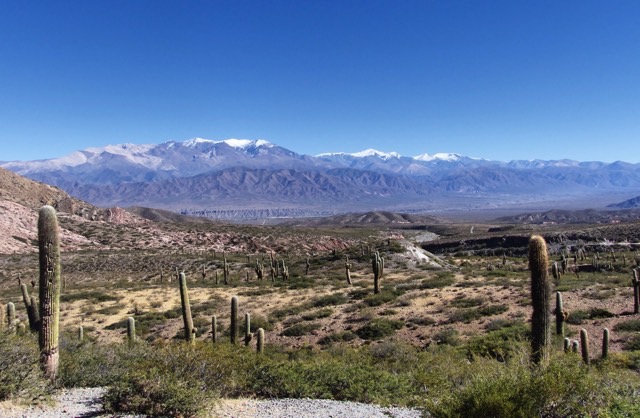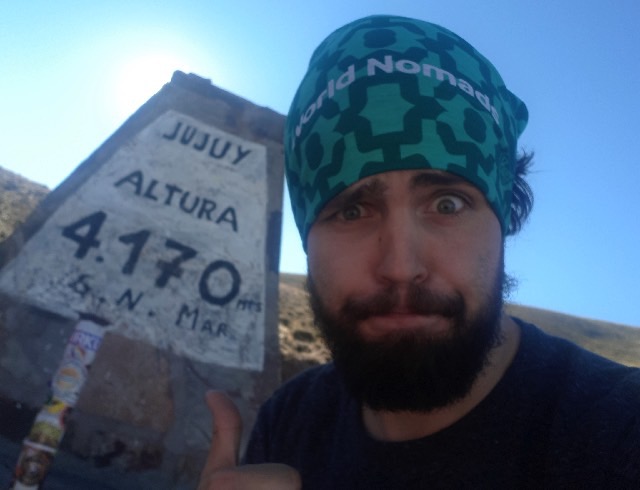Máté on assignment in Argentina
Sometimes a destination doesn't live up to all you imagined it to be, but as Máté learned, that doesn't mean it can't offer valuable lessons.
As winner of the 2018 Travel Writing Scholarship, Máté Földi's first assignment sent him to Buenos Aires to learn the tricks of the trade then off to discover the rest of Argentina and find a story to share with the world.
The Workshop
At first I thought I knew everything I was being taught at Tim Neville's travel writing workshop. But my ego was soon brought down to earth when I realized this was more acquaintanceship than intimate marriage.
See, my writing up to this point had been intuitive, my ability to play with language masking a blissful ignorance of the magic formulas that underpin non-fiction narrative. Sometimes it worked: I was the only winner who didn’t meticulously tailor their piece to Tim’s guide, The Art of Travel Writing, and last year’s winning entries, refusing to read them lest they corrupt my creativity.
Yet, this ‘Leroy Jenkins’ approach only gets you so far. Listening to Tim’s lectures on how to successfully write non-fiction travel pieces was a welcome humbling that showed how much more I need to learn. Being taught the tricks of the trade from an accomplished professional like Tim was a unique and incredibly insightful experience: by far the highlight of the trip.

The Say Hueque Experience
In Buenos Aires, Salta was hyped up to be one of the most beautiful parts of the country, so I traveled there hoping it would offer a balance of culture and natural wonder. Plagued by debilitating altitude sickness in the first few days of my arrival, my glass-half empty outlook was only exemplified as I struggled to appreciate my position. I’d grown up fascinated with Latin America, romanticizing the continent into some exotic paradise that Salta and Jujuy quite simply didn’t live up to.
Thankfully, I eventually got it together, realizing that such experiences are part of the baggage of travel writing: inevitable side effects of extensive travel, our threshold for amazement forever raised. It was definitely a valuable lesson in mental preparation and fortitude that I will carry with me.
That said, I’ve got nothing but love for Say Hueque, who did a fantastic job organizationally; it’s not their fault that hectic group trips aren’t my thing. Though next time I’ll definitely make the effort to Google the area rather than just pulling a “#YOLO”.
Taking instruction from our workshop, I kept a vigilant eye, ear, and nose out for a potential Eureka moment. Being stuck in a vehicle all day, coupled with the language barrier, did complicate matters a bit. However, within a few hours of landing back in Buenos Aires, I had my story: how I got here and what being in this romanticized land of my adolescence meant.

The Next Step
The value of hard work finally struck home with that congratulatory Skype call. For years, my writing had been praised, as I was urged to make something of this talent. I never listened. Look what happened when I did: with just a bit of hard work I won a competition at the expense of thousands. It has inspired me to push myself to work even harder and make sure that it is the first of many successes.
Indeed, the full weight of it hit me when I met a Senior Vice President of National Geographic. Told about the press conference while out on an errand, I showed up in jeans and a Family Guy t-shirt, my hair and face forest gone wild. Her disdain was palpable, as she explained in the diplomatic corporate vernacular that they’re an elite institution who don’t just work with anybody. But then I told her about this scholarship that I’d won: now she was impressed and promptly gave me her email. If that’s how National Geographic reacts, imagine the rest of the travel writing world.
So what’s next? It’s time to rise and grind.


